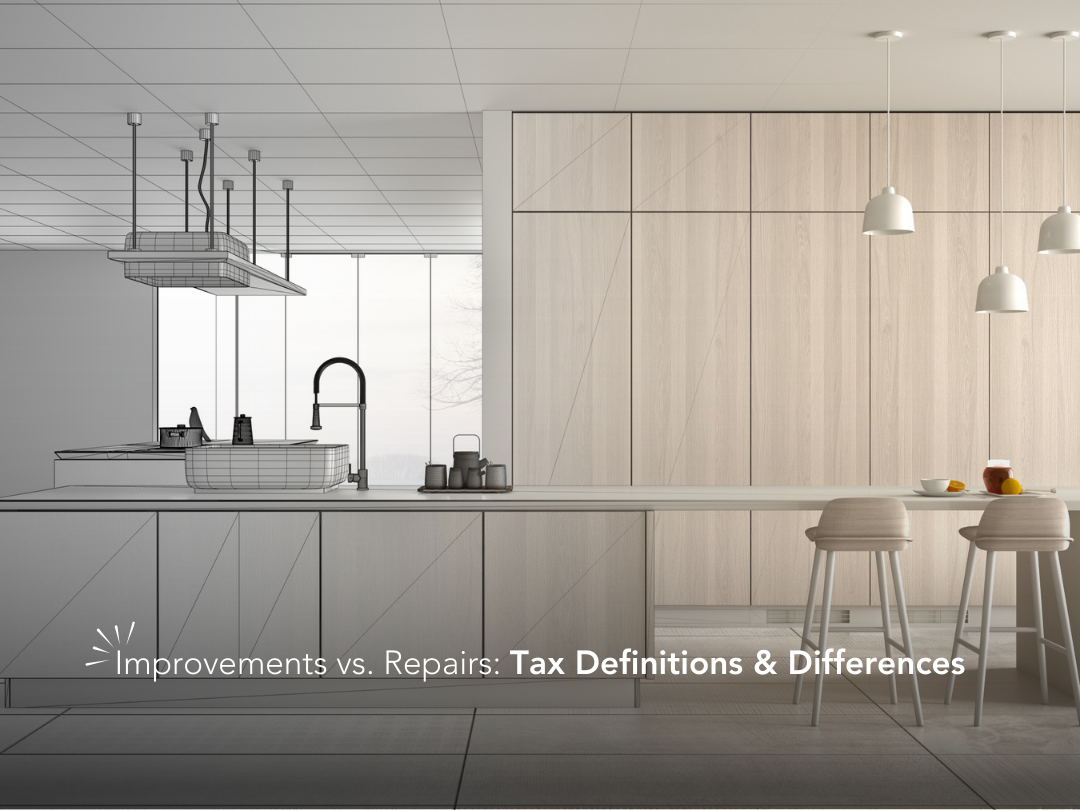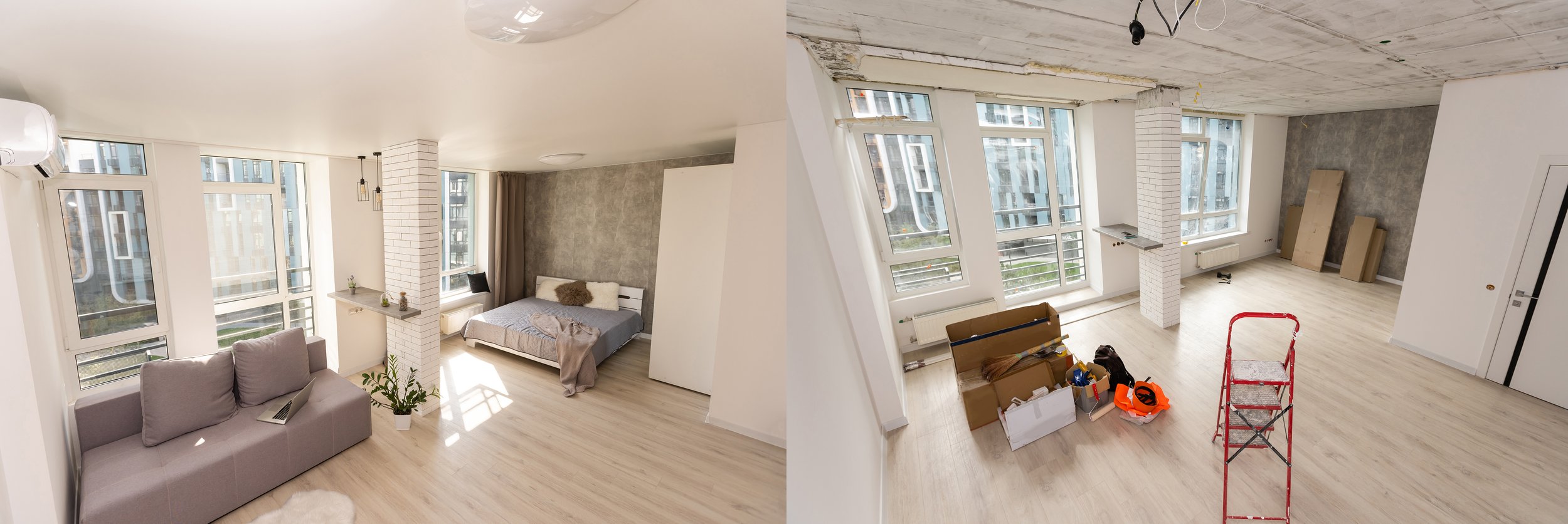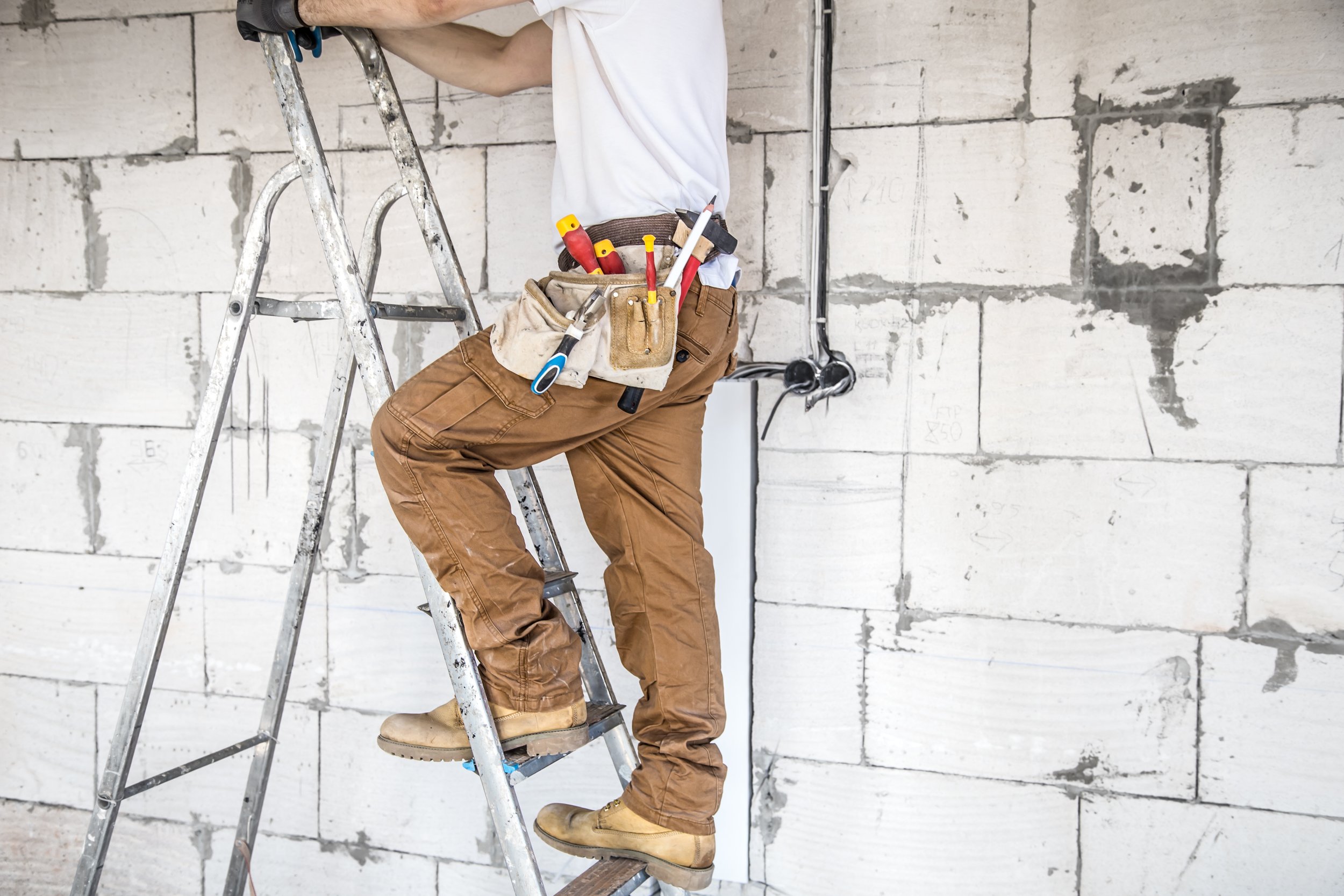In the world of owning property, telling the difference between improvements and repairs isn't just about keeping things in shape—it's a financial choice that can affect your taxes.
Let's delve into the key differences and how they impact your financial landscape.
What Qualifies as a Capital Improvement?
A capital improvement involves a permanent structural change or the restoration of an aspect of a property that enhances its overall value, extends its useful life, or adapts it to new uses. These alterations are substantial and typically come with a higher cost. The aim is to make updates that contribute to the property's long-term value.
According to Investopedia, capital improvements are updates that extend the "useful life" of the property and add value for years to come. These could range from building additions, installing central air conditioning, replacing an entire roof, renovating the kitchen or bathroom, building a deck, to installing new windows.
Understanding Repairs
On the flip side, repairs are actions taken to restore something to its previous "good" condition without enhancing or improving it. Repairs are usually considered part of general maintenance, essential for keeping the property in working condition.
Examples of repairs include refinishing wood floors, repainting walls, fixing a roof, replacing a window, repairing existing plumbing, or fixing appliances that are already in place.
Capital Improvement vs. Repair
Capital Improvement
Building an Addition to the Property
Installing Central Air Conditioning
Replacing the Entire Roof
Renovating the Kitchen or Bathroom
Building a Deck
Installing New Windows
Repair
Refinishing Wood Floors
Repainting Walls
Repairing the Roof
Replacing a Window
Repairing Existing Plumbing
Fixing Existing Appliances
Tax Deductions for Repairs
Repairs are generally deductible in the year they are incurred. Since they are considered necessary for the ongoing maintenance of the property, the expenses can be written off as operational costs. This provides immediate financial relief and can be advantageous for property owners seeking to offset their taxable income.
Capitalizing on Improvements
Improvements, being enhancements that increase the property's value, are typically not deductible in the year they occur. Instead, the costs are capitalized and depreciated over time. This means that the expense is spread out over the useful life of the improvement. While this doesn't provide an immediate tax benefit, it can result in long-term tax advantages through depreciation deductions.
Prepping for Tax Season
As tax season approaches, the decision between repairing or making a capital improvement should involve a thoughtful cost-benefit analysis. Proper documentation is key when distinguishing between repairs and improvements for tax purposes. Maintaining detailed records of expenses, invoices, and receipts can provide clarity during tax filing.
It's advisable to consult with a tax professional to ensure compliance with tax regulations and to maximize potential deductions. Consultation with the IRS or a certified accountant is essential in determining applicable deductions based on your specific situation.
Whether it's the installation of central air conditioning or a simple roof repair, being well-informed about the nature of the work you're undertaking can make a significant difference in your financial strategy. Take the time to assess your property needs and align them with the tax implications, ensuring a smoother financial journey in the long run.
According to Investopedia, capital improvements are updates that extend the "useful life" of the property and add value for years to come. These could range from building additions, installing central air conditioning, replacing an entire roof, renovating the kitchen or bathroom, building a deck, to installing new windows.
Understanding Repairs
On the flip side, repairs are actions taken to restore something to its previous "good" condition without enhancing or improving it. Repairs are usually considered part of general maintenance, essential for keeping the property in working condition.
Examples of repairs include refinishing wood floors, repainting walls, fixing a roof, replacing a window, repairing existing plumbing, or fixing appliances that are already in place.
Capital Improvement vs. Repair
Capital Improvement
Building an Addition to the Property
Installing Central Air Conditioning
Replacing the Entire Roof
Renovating the Kitchen or Bathroom
Building a Deck
Installing New Windows
Repair
Refinishing Wood Floors
Repainting Walls
Repairing the Roof
Replacing a Window
Repairing Existing Plumbing
Fixing Existing Appliances
Tax Deductions for Repairs
Repairs are generally deductible in the year they are incurred. Since they are considered necessary for the ongoing maintenance of the property, the expenses can be written off as operational costs. This provides immediate financial relief and can be advantageous for property owners seeking to offset their taxable income.
Capitalizing on Improvements
Improvements, being enhancements that increase the property's value, are typically not deductible in the year they occur. Instead, the costs are capitalized and depreciated over time. This means that the expense is spread out over the useful life of the improvement. While this doesn't provide an immediate tax benefit, it can result in long-term tax advantages through depreciation deductions.
Prepping for Tax Season
As tax season approaches, the decision between repairing or making a capital improvement should involve a thoughtful cost-benefit analysis. Proper documentation is key when distinguishing between repairs and improvements for tax purposes. Maintaining detailed records of expenses, invoices, and receipts can provide clarity during tax filing.
It's advisable to consult with a tax professional to ensure compliance with tax regulations and to maximize potential deductions. Consultation with the IRS or a certified accountant is essential in determining applicable deductions based on your specific situation.
Whether it's the installation of central air conditioning or a simple roof repair, being well-informed about the nature of the work you're undertaking can make a significant difference in your financial strategy. Take the time to assess your property needs and align them with the tax implications, ensuring a smoother financial journey in the long run.
Need help navigating the tax differences between property repairs and improvements?
Talk to our experts for advice on how to maximize your tax savings and ensure your property investments stay on track.









